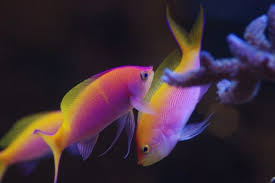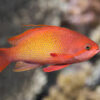Exploring the Relationship Between Dragons and Other Sacred Creatures in Chinese Culture

In Chinese culture, the dragon is one of the most iconic and revered mythical creatures. Its powerful presence in folklore, art, and spiritual traditions has established it as a symbol of strength, protection, and auspicious power. However, the dragon is not the only sacred creature that plays a prominent role in Chinese mythology. It shares its space with other divine beings, each holding its own significance and connection to the natural world, harmony, and the cosmos. Together, these creatures form a complex and interconnected web of symbolism that is integral to Chinese culture and its understanding of the universe.
In this article, we explore the fascinating relationship between dragons and other sacred animals in Chinese mythology, uncovering how these creatures complement each other, share roles, and represent various facets of life, nature, and cosmic balance.
The Dragon and the Phoenix: A Symbol of Harmony
One of the most famous and enduring pairings in Chinese mythology is that of the dragon and the phoenix. These two creatures represent a dynamic balance of opposites, with the dragon embodying power, masculinity, and the celestial realm, while the phoenix symbolizes beauty, femininity, and the earthly realm. Together, they are often depicted in pairs, symbolizing marital harmony, the union of yin and yang, and the balance between heaven and earth.
The dragon, often associated with the Emperor and celestial authority, is considered a symbol of yang energy, representing strength, fire, and the active forces of the universe. In contrast, the phoenix is a representation of yin energy, associated with the Empress and the nurturing aspects of life. The pairing of these creatures conveys the idea that both masculine and feminine energies must coexist and work together for peace, prosperity, and success. In many artistic depictions, the dragon and phoenix are shown together in a dance or chase, their movements harmonizing as they chase after the other’s beauty and power. This representation reinforces their complementary roles in the cosmic order.
The Dragon and the Tiger: Duality and Balance
Another significant pairing in Chinese culture is that of the dragon and the tiger. While the dragon represents celestial strength and auspicious power, the tiger embodies the earth’s fierceness, courage, and territorial dominance. In this pairing, the dragon and the tiger are often depicted as rivals, each striving for dominance. However, their relationship also illustrates the duality and balance of the world.
The dragon is associated with the power of the heavens, controlling water and rain, while the tiger is connected to the earth, symbolizing both physical strength and the mastery of land creatures. Their rivalry and tension symbolize the dynamic interplay between opposing forces in nature. In Chinese medicine, this duality is reflected in the concept of balance between yin and yang, and the idea that harmony can only be achieved when these opposing forces find equilibrium.
Together, the dragon and tiger represent the ongoing struggle between contrasting forces, showing how strength and courage must be tempered with wisdom and restraint. In art and symbolism, the dragon and tiger often appear together, symbolizing the need for balance between power and discipline in life.
The Dragon and the Kylin: Good Fortune and Protection
Another sacred creature closely associated with the dragon in Chinese culture is the kylin (or qilin). The kylin is a mythological hooved chimerical creature, often depicted with the body of a deer, the hooves of a horse, and the tail of an ox, sometimes with the features of a dragon, including scales and horns. It is considered a benevolent and auspicious creature, symbolizing good fortune, prosperity, and peace.
The relationship between the dragon and the kylin is one of mutual protection and complementary roles. While the dragon represents imperial power, the kylin is often considered a protector of virtue and a harbinger of good luck. According to legend, the kylin is known to appear during the reign of wise and just rulers. Its presence is believed to indicate a time of prosperity, peace, and moral righteousness. In this way, the dragon and the kylin represent different aspects of good governance—the dragon representing the power of the ruler, and the kylin symbolizing the ruler’s benevolence and moral integrity.
In ancient times, the kylin was believed to protect the emperor and the imperial family, ensuring that only virtuous rulers could ascend to power. Its ability to bring peace and prosperity was seen as complementary to the dragon’s role as a symbol of celestial authority.
The Dragon and the Tortoise: Longevity and Stability
The tortoise is another sacred animal frequently paired with the dragon in Chinese mythology. The tortoise represents longevity, stability, and endurance, and it is often depicted as a symbol of support for the heavens. The tortoise’s slow, deliberate movements and long lifespan make it an emblem of wisdom, patience, and steady growth. In Chinese cosmology, the tortoise is sometimes said to carry the weight of the world on its back, a task which aligns it with the dragon in its celestial duties.
The dragon and the tortoise are believed to work together to maintain the stability of the universe. While the dragon commands the heavens and rain, bringing life and energy to the world, the tortoise provides the steady foundation that ensures long-term balance and peace. In many legends, the tortoise is seen as a companion to the dragon in creating harmony between the natural world and the celestial realm. The pairing of the two creatures symbolizes the delicate balance between strength and wisdom, power and stability.
In Feng Shui, the dragon and tortoise pairing is also used to bring both wealth and longevity to a household or business. The tortoise is often placed in the back of a space to provide stability, while the dragon is positioned at the front to usher in prosperity and success.
The Dragon and the Snake: Transformation and Renewal
The relationship between the dragon and the snake in Chinese mythology is often one of transformation and renewal. While the dragon is seen as a creature of the heavens, the snake is a symbol of transformation, rebirth, and adaptability. In many stories, the snake is depicted as a creature that sheds its skin, representing renewal, change, and growth. The snake is also associated with the element of earth, which complements the dragon’s command over the heavens.
Together, the dragon and the snake represent the transformative forces of nature. Their relationship signifies the potential for growth and evolution, both on a personal level and within the larger cosmic order. The snake’s shedding of its skin serves as a metaphor for the cycles of life, while the dragon’s power over the elements illustrates the divine forces that guide these cycles of transformation.
In Chinese folklore, the snake is sometimes viewed as a lower form of the dragon, with the potential for ascension to higher spiritual planes. This reinforces the theme of personal and spiritual transformation, with the snake embodying the idea of potential growth and the dragon symbolizing the realization of that potential.
Conclusion: The Interconnected Web of Sacred Creatures
In Chinese mythology, dragons are not solitary figures but are part of a larger network of sacred creatures that embody various aspects of nature, cosmic balance, and the human experience. From the harmonious pairing with the phoenix to the rivalry with the tiger, and the complementary relationship with the kylin, tortoise, and snake, the dragon’s interactions with other sacred creatures reflect the complex and dynamic nature of Chinese cosmology.
These mythical creatures work together to maintain harmony and balance within the universe, each playing its own unique role in the ongoing cycle of life, death, and rebirth. Together, they form a unified system of symbols that speaks to the values of strength, wisdom, protection, and transformation, which continue to resonate deeply within Chinese culture. The relationship between dragons and these other sacred beings serves as a reminder of the interconnectedness of all things, and the delicate balance that governs the natural and spiritual worlds.

